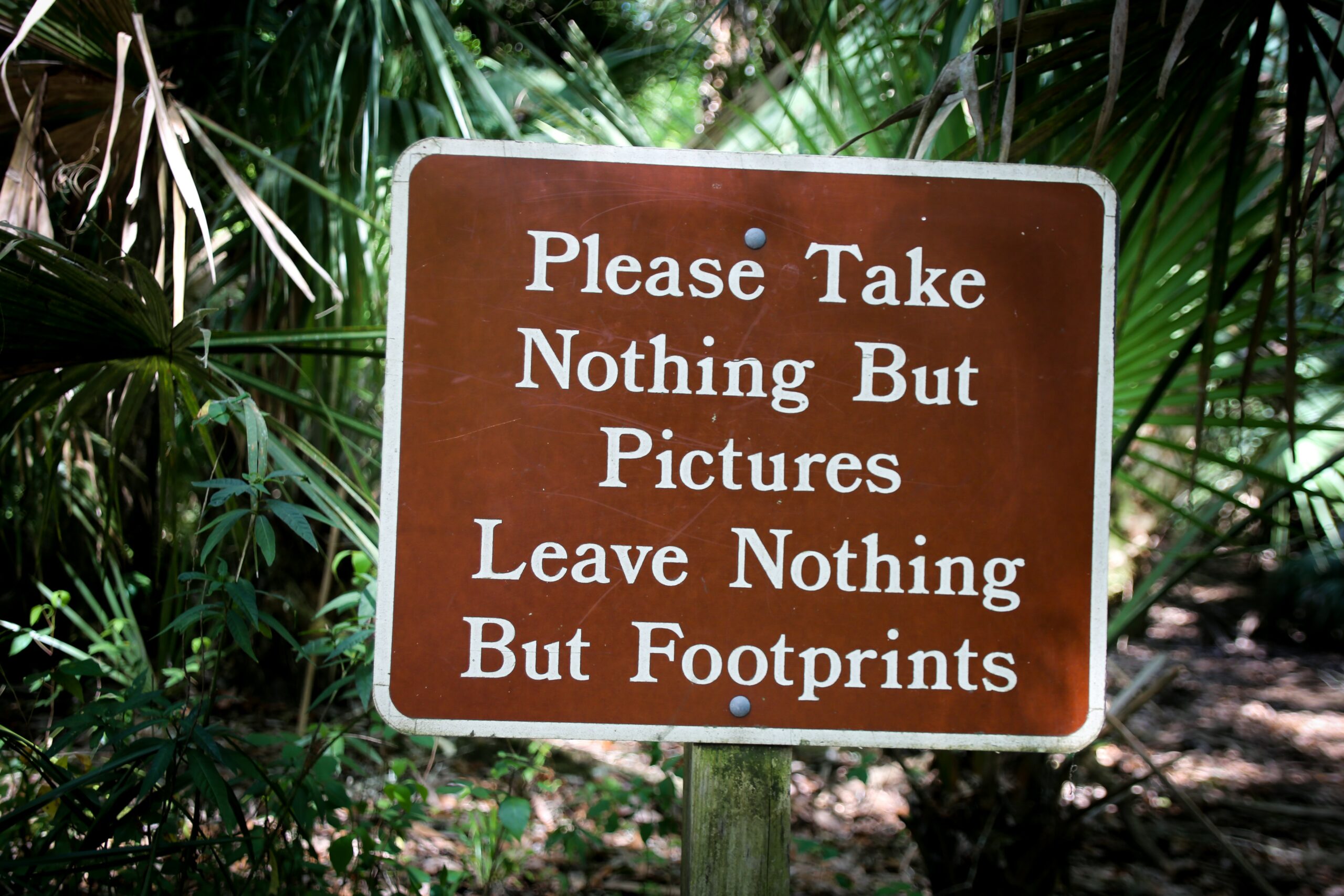When we step onto a trail, we’re not just taking a walk in nature — we’re stepping into a shared space with other hikers, cyclists, horseback riders, wildlife, and delicate ecosystems. Practicing good trail etiquette keeps the experience enjoyable for everyone and helps preserve these special places for years to come.
Whether you’re heading out for a short afternoon hike or a multi-day adventure, these simple guidelines will help you tread lightly, share the path respectfully, and leave the outdoors better than you found it.
1. Yielding the Right-of-Way
- One of the most common sources of trail confusion is knowing who should step aside. The basic rules are:
- Uphill hikers have the right-of-way — it’s harder to restart when climbing.
- Cyclists yield to hikers and horses — and should signal when approaching.
- When yielding, step to the downhill side of the trail for safety and stability.
- This small courtesy makes the trail safer and more enjoyable for everyone.
2. Stay On The Trail
Shortcuts might seem harmless, but they cause erosion, destroy vegetation, and damage wildlife habitats. Always:
- Stick to marked paths.
- Avoid widening trails by walking side-by-side in narrow sections.
Preserving the trail’s integrity protects both the land and future visitors’ experience.
3. Leave No Trace
The simplest way to protect nature is to take everything you brought with you back home:
- Carry out trash, food wrappers, and water bottles.
- Even biodegradable waste like fruit peels can harm wildlife or attract pests.
- If nature calls, follow Leave No Trace bathroom guidelines or use proper facilities.
Your goal: leave the trail looking as if you were never there.

4. Respect Wildlife
Spotting a deer, fox, bird or other wildlife can be magical — but it’s important to admire from a distance:
- Never feed wild animals; it changes their natural behavior.
- Use a zoom lens for photos rather than getting too close.
- Give larger animals plenty of space to avoid stress or danger.

5. Communicate Clearly
A friendly “hello” goes a long way in creating a positive trail atmosphere. Other helpful habits:
- Call out when passing, especially on narrow or blind corners.
- Use a bell if cycling on multi-use trails.
Good communication prevents collisions and keeps things friendly.

6. Be Prepared
Preparation isn’t just about comfort — it’s about safety:
- Check weather conditions and trail closures before leaving home.
- Bring enough water, snacks, and layers for changing conditions.
- Let someone know your plans if heading to a remote location.
7. Stay Aware
Nature is always changing, and awareness helps you stay safe:
- Watch for loose rocks, roots, or slippery sections.
- Keep an ear out for other hikers, cyclists, or wildlife.
- Avoid speakers and earbuds that can block important sounds – listen to nature – not music.

8. Control Your Speed
Whether you’re hiking briskly, trail running, or riding a bike:
- Slow down when passing others.
- Be ready to stop suddenly if the trail is crowded or obstructed.

9. Respect Private Property
Some trails cross or border private land:
- Obey all signs and stay within marked boundaries.
- Treat the land as if it were your own — with care and respect.
Why Trail Etiquette Matters
Good trail etiquette isn’t about rules for the sake of rules — it’s about protecting the spaces we love, building a sense of community among outdoor enthusiasts, and making sure everyone has a safe, enjoyable experience.
When we all do our part, the outdoors becomes more welcoming, sustainable, and rewarding for everyone who visits.
Hit the Trails the Right Way
Respecting the trail isn’t just about rules — it’s about creating a better experience for everyone who shares it. Whether you’re hiking solo, with friends, or on a guided adventure, a little courtesy goes a long way toward keeping our outdoor spaces safe, beautiful, and enjoyable for years to come.
Ready to put your trail manners into practice?
Join one of our curated nature-based day trips and experience Tennessee’s most stunning trails with expert local guides who know the land, the history, and the hidden gems.






